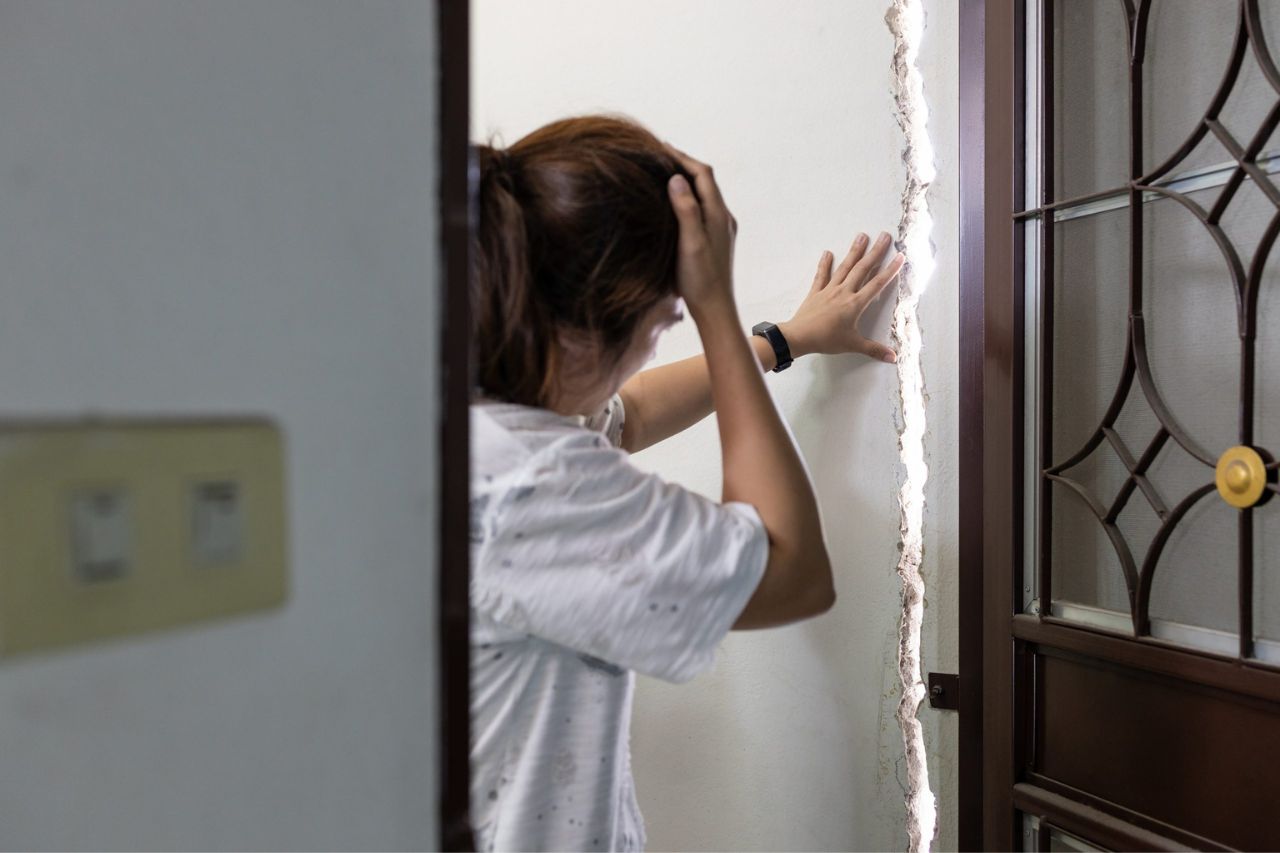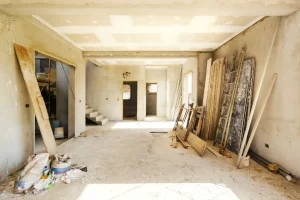Subsidence and property insurance

Why is hot summer considered one of the main causes of subsidence?
Like all good mysteries, subsidence has many sources and causes, but hot summer days are often one of the main suspects. Subsidence is a form of ground movement where the soil or bedrock beneath the surface of the earth subsides or collapses. While subsidence can be caused by natural geological reasons, such as geological faults or weaknesses in the earth’s crust, it can also be caused by human activities, like extracting water from an aquifer or building on top of abandoned mines.
One common cause of subsidence during a hot summer is due to clay soil which expands slightly as it absorbs moisture from rain. When temperatures rise and the rain ceases, however, the moisture evaporates and this expansion reverses itself quickly causing subsidence damage to whatever is built upon that area.
Hot summer days may be enjoyable for sun worshippers but they can hide unseen dangers within our back gardens! Unchecked subsidence can lead to weakening foundations, structural damage, and costly repairs so it pays to stay vigilant when monitoring subsurface movements.
What are the warning signs of subsidence in a property?
Many homeowners don’t understand the risks of subsidence – a ground movement that can result in a range of structural issues to buildings. When it comes to detecting subsidence, there are a few warning signs you should be aware of. In the case of your house, it could be as simple as noticing cracks running diagonally on walls, either inside or outside, or around the window and door frames indicating ground movements beneath the house.
Other symptoms may include door frames not closing properly and windows being unable to stay open due to wall distortion. Of course, changes in ground levels around and underneath house foundations can also result in damage to properties that require professional attention immediately.
Sloping floors can also be an indication of subsidence, as can other more minor signs like rippling wallpaper, cracks in masonry and skirting boards that don’t fit together properly. If you notice any of these warning signs on your property, it’s best to consult a structural engineer for further investigation.
Finally, if living near an area with old coal mines or mine collapses in the ground below you. These circumstances can all lead to serious issues for any home or property such as cracks in floors and walls, slipping roof tiles and even columns collapsing if left unchecked.
Taking these warning signs into consideration is essential for anyone looking to preserve their property from subsidence damage. So remember – when it comes to the ground below your feet–it pays to pay attention!
Does climate change increase the risk of subsidence?
Climate change is one of the great challenges of our times, and its effects are being felt in many ways, including the risk of subsidence. Subsidence occurs when a building or structure starts to sink as the result of instability in the ground beneath it, and can be expensive – and dangerous – to fix.
In certain areas, this risk is amplified by climate change, specifically through two factors: periods of extended drought followed by heavy rainfall. Drought causes soil to dry out and shrink, making it more likely for upward movement to occur; then heavy rain can overload the ground and cause subsidence.
To guard against risk, insurers may impose restrictions on development or may require homeowners to take steps to prevent subsidence from occurring; these prevention measures can include redesigning foundations, underpinning existing structures, laying built-in drainage systems and more. Climate change isn’t just affecting the environment around us; it is also potentially affecting our homes in unseen ways – we all need to take action now before it’s too late.
The risk of subsidence caused by climate change is real, but taking steps today can help ensure that rising risk doesn’t become an issue tomorrow. With some forethought now we can protect ourselves against unwanted risks.

Does property insurance cover subsidence in the UK?
Property insurance in the UK does cover subsidence, but mine subsidence coverage is usually excluded from standard policies. This means purchasing mine subsidence insurance as an add-on to an existing policy may be necessary.
However, before doing this it is important to contact your insurance company and check which kind of subsidence coverage is available. Depending on the age of a building and the degree of subsidence risk, some insurers in the UK will offer subsidence insurance at a reduced rate, while coverage may be more expensive or even impossible in certain other cases.
It is always prudent to consult with your insurer first to determine what kind of subsidence coverage you need and whether it is even available. With a little bit of research, you can find out if property insurance covers mine subsidence issues in the UK and make sure your property remains safe and secure regardless of any unforeseen events.
What is mine subsidence insurance?
Mine subsidence insurance coverage offers protection for property owners in the event of mine subsidence damage due to man-made mines. This type of insurance may cover physical damage such as cracking and settling of foundations, interior walls and floors, and costly repairs that may be needed when mine subsidence occurs.
It also protects against heaving and erosion as a result of mining activities. In addition to providing financial relief for mine subsidence damage, mine subsidence insurance can provide peace of mind for those residing in areas with a known coal mine or abandoned mine hazards. To ensure that coverage applies should mine damage occur, proper mine subsidence insurance must be purchased prior to any mining activities taking place.
For many people throughout the country, mine subsidence insurance is an invaluable asset which helps protect not only their home but also their future security. So whether you live on the surface or beneath it, purchasing mine subsidence insurance can protect your long-term safety and financial well-being.

How much does the subsidence insurance cost?
The cost of protecting your residential property from the risk of subsidence depends on a few factors. If you already have home insurance with an existing insurer, for instance, then the cost will be lower than if you start a new policy from scratch.
The cost can also vary depending on the particular risks associated with your property, such as geological features in the area or any history of subsidence claims. Ultimately, however, the cost of taking out a specialist policy to protect against potential subsidence damage should not be too significant when compared to other aspects of home insurance. It may cost more than a standard homeowner’s policy, but it could cost far less than dealing with a full-blown subsidence claim.
Your residential property is at risk from both natural and man-made causes – so make sure that you are prepared for either eventuality with adequate protection against subsidences. Like all forms of home insurance, it’s better to anticipate rather than regret when it comes to safety and security. In other words: peace of mind is priceless!
Are there a lot of insurance claims for subsidence?
In 2018, an estimated 23,000 claims for subsidence damage were made in the UK. This amounted to one of the highest bills ever incurred due to such claims – a staggering £145m. With property owners throughout the country facing more and more extreme weather conditions each year, this trend is unlikely to slow any time soon.
This is why it’s so important to make sure that you’re covered with the right insurance policy. With the cost of subsidence damage rising, and insurance claims becoming increasingly common, it’s vitally important to invest in mine subsidence coverage if you live in an area at risk for this type of damage. Not only could such a policy save you money in the long run, but it could also provide peace of mind knowing that your property remains safe and secure regardless of any unforeseen events.
Ultimately, investing in mine subsidence insurance is a wise decision for those living in areas at risk from subsidence damage – especially given the escalating cost of such claims. Taking out an appropriate policy can be a valuable safeguard against the potential financial burden of subsidence damage, helping ensure your home stays safe and secure. So don’t let yourself go unprotected – consider investing in mine subsidence insurance today!







